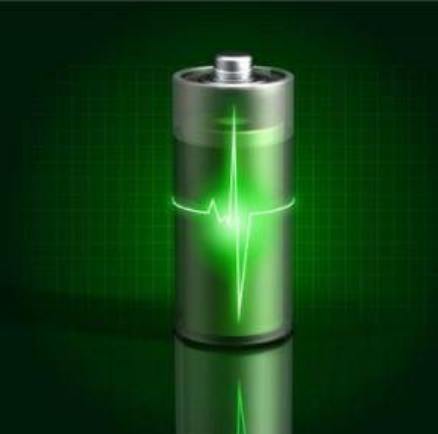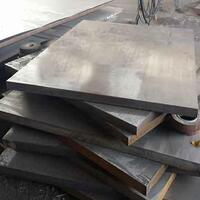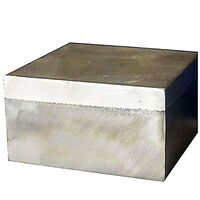1. What Does Metal Clad Mean?
At its core, the metal clad meaning refers to any structure, component, or material that features a metal outer layer bonded to another material—often for enhanced durability, corrosion resistance, or aesthetic appeal. The term ‘clad metals’ describes composites like aluminum clad steel or stainless clad aluminum, where two metals are metallurgically bonded. Meanwhile, in construction, ‘metal clad’ commonly describes buildings, walls, or roofs finished with metal exteriors—such as a metal clad house or a metal clad shed.

2. Common Types of Metal Clad in Architecture
Metal cladding has become a go-to choice for modern exteriors thanks to its sleek look and longevity. Popular options include metal clad wall systems, metal clad roofs, and full metal facade installations. Designers often choose materials based on climate, budget, and visual goals.
- Corten steel facade and corten steel siding offer a rustic, weathered look that develops naturally over time—though corten siding cost can be higher than alternatives.
- Zinc facade and zinc clad roof systems provide a refined, matte finish with excellent corrosion resistance.
- Copper siding and zinc metal siding age gracefully, developing unique patinas.
- Exterior corrugated metal siding and corrugated steel facade styles deliver industrial charm and structural strength.
- Standing seam siding—including vertical standing seam metal siding and colorbond standing seam—offers clean lines and superior weather protection.
3. Popular Metal Clad Building Materials
Beyond aesthetics, performance matters. Many builders opt for steel clad buildings due to their strength and fire resistance. A steel clad house or metal clad building often uses steel plate or mild steel plate as the base, sometimes enhanced with coatings like zinc coated (galvanized) finishes.
For roofing and coping details, systems like PAC CLAD standing seam roof, PAC CLAD coping, and PAC CLAD column covers are widely specified for commercial and residential projects. Dormers can even feature a zinc clad dormer for a cohesive design.
Aluminum clad sheet (or aluminium clad sheet) is lightweight and corrosion-resistant, making it ideal for wall panels. Similarly, aluminum diamond plate or aluminum checker plate is used in high-traffic areas for slip resistance.
4. Clad Metals in Industrial and Electrical Applications
The term ‘clad metal meaning’ extends beyond architecture. In manufacturing, clad metals like aluminum clad stainless steel or stainless clad aluminum combine the best properties of both materials—such as strength and corrosion resistance.

Examples include titanium clad plates for chemical processing, copper nickel clad for marine environments, and 2024 T3 clad or 7075 T6 clad aluminum alloys used in aerospace. Alloy clad materials like inconel 625 overlay or chrome carbide overlay enhance wear resistance in extreme conditions.
In electrical contexts, metal clad electrical wire (also called metal clad wire or MC cable) features insulated conductors wrapped in a flexible metal sheath for protection. Variants include aluminum clad steel wire, aluminum clad wire, and Cu clad wire—each suited to specific voltage and environmental needs.
5. Insulation and Specialty Uses
Metal clad insulation—such as aluminum clad pipe insulation—is common in HVAC and industrial piping to prevent heat loss and condensation. The reflective aluminum layer improves thermal efficiency while protecting the insulation core.
Other niche applications include metal clad nameplates, boiler plate steel for pressure vessels, and perforated plate or diamond plate sheet metal for grating and decorative screens.
6. Understanding Metal Plates and Sheets
Metal plate and metal sheet cutting are foundational to fabricating clad systems. Common types include stainless steel plate (like 316 stainless steel plate or 304L), carbon steel plate, and alloy plate (e.g., 6061 T6 aluminum plate or 4140 steel plate).
Thicknesses vary—1/8 inch steel plate, 3/16 metal plate, or 1/4 metal plate are standard for structural uses. Specialty options include stainless steel diamond plate, brass plates for engraving, and titanium plate for high-performance needs.

7. Finishing and Coating Technologies
Electroplating plays a key role in enhancing metal performance. Chromium electroplating creates a hard, shiny surface (chrome metal), while electroless nickel or nickel sulfamate coatings improve wear resistance. Gold coating and electroplating gold are used in electronics and luxury finishes.
Zinc and nickel alloy (or zinc nickel alloy) coatings offer superior corrosion protection—especially in automotive and aerospace applications.
8. Cost Considerations and Availability
Prices vary widely: corten steel siding cost depends on thickness and finish, while aluminum sheet for sale or steel plate price fluctuates with market demand. For local projects, many search for ‘steel plate near me’ or ‘aluminium checker plate near me’ to reduce shipping costs.
Distributors often carry stainless steel sheet and plate in multiple grades (316L, 904L, etc.), along with alloy sheet 3mm or thicker plates like 5083 aluminum plate for marine use.
9. Installation and Maintenance Tips
Metal weatherboard or metal clad siding requires proper flashing and fastening to prevent water intrusion. Standing seam facade systems like PAC CLAD HWP are designed for easy installation and long-term performance.
While metal panel cladding is highly durable and vandal resistant, periodic cleaning preserves appearance—especially for copper or zinc surfaces that develop patinas.
10. Why Choose Metal Clad?
Whether you’re designing a steel clad building, specifying clad metals for industrial use, or selecting a metal clad roof for your home, the benefits are clear: longevity, low maintenance, design flexibility, and sustainability. From aluminum clad pipe insulation to corten steel plate walls, metal clad solutions meet diverse needs across sectors.
In short, understanding the full scope of metal clad—from metal clad meaning to real-world applications—empowers smarter decisions for builders, architects, and engineers alike.
Our Website founded on October 17, 2012, is a high-tech enterprise committed to the research and development, production, processing, sales and technical services of ceramic relative materials such as 10. Our products includes but not limited to Boron Carbide Ceramic Products, Boron Nitride Ceramic Products, Silicon Carbide Ceramic Products, Silicon Nitride Ceramic Products, Zirconium Dioxide Ceramic Products, etc. If you are interested, please feel free to contact us.
